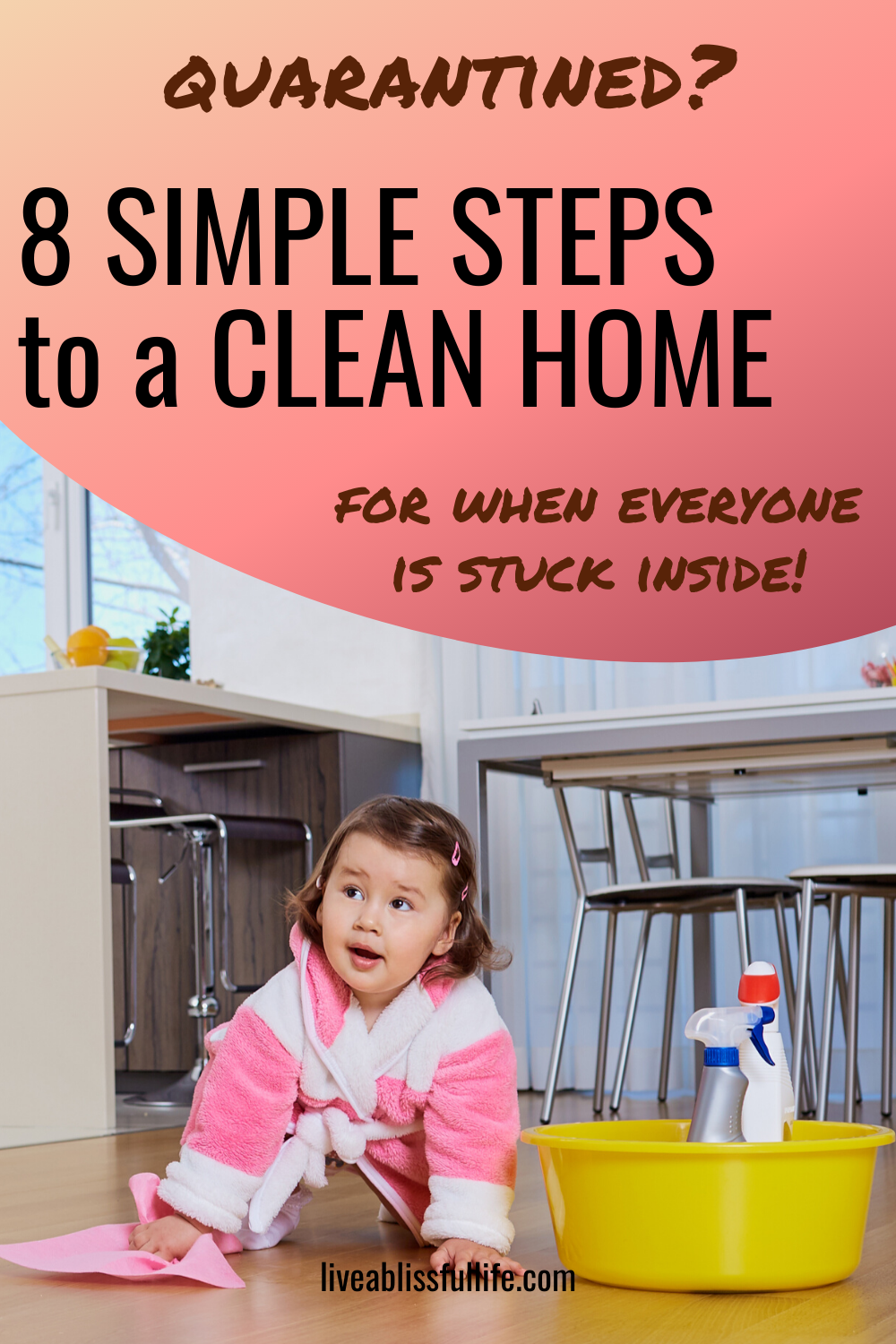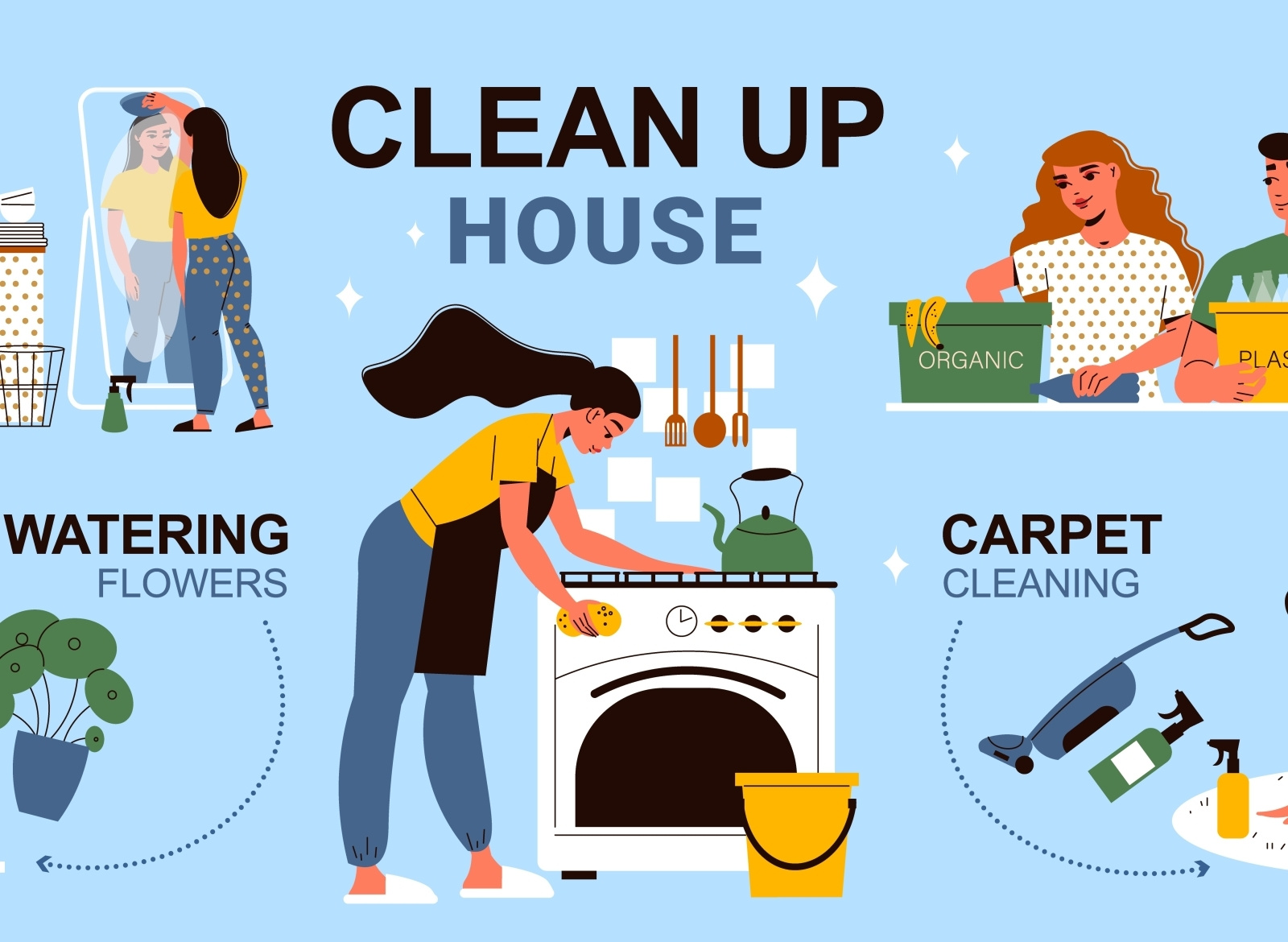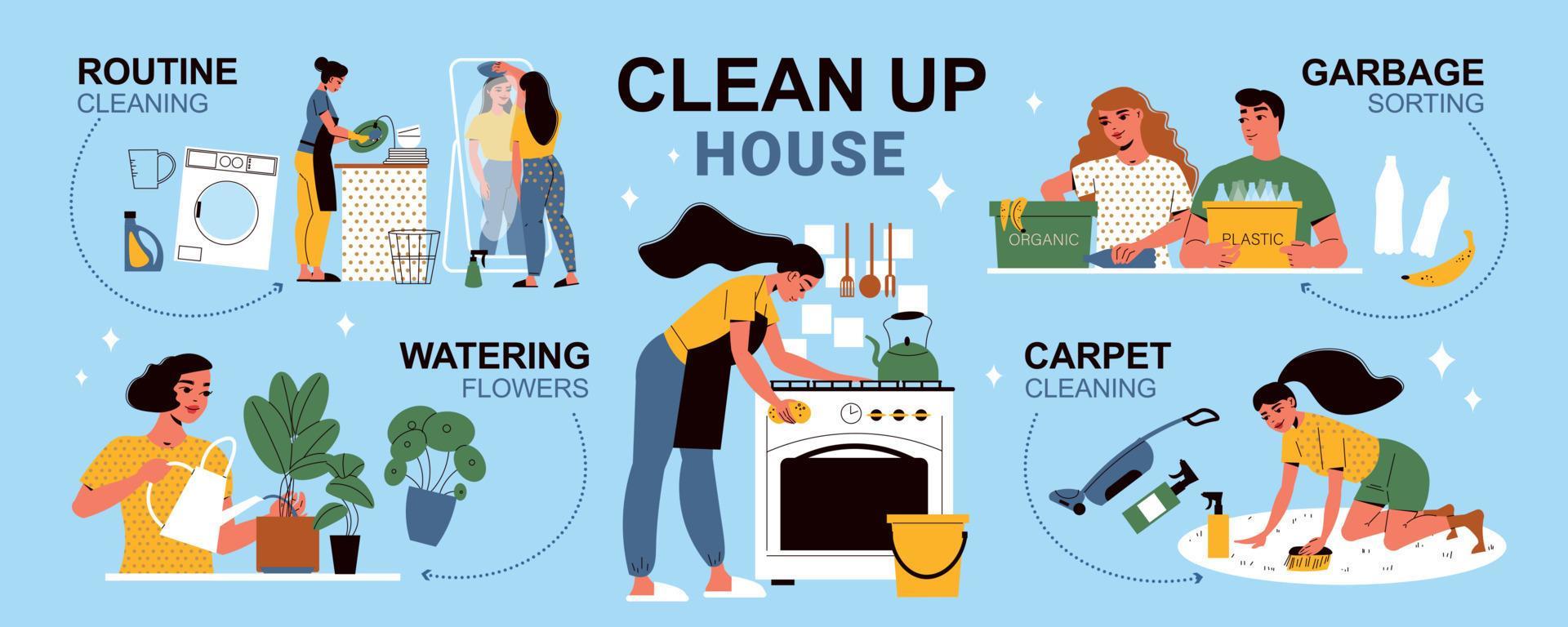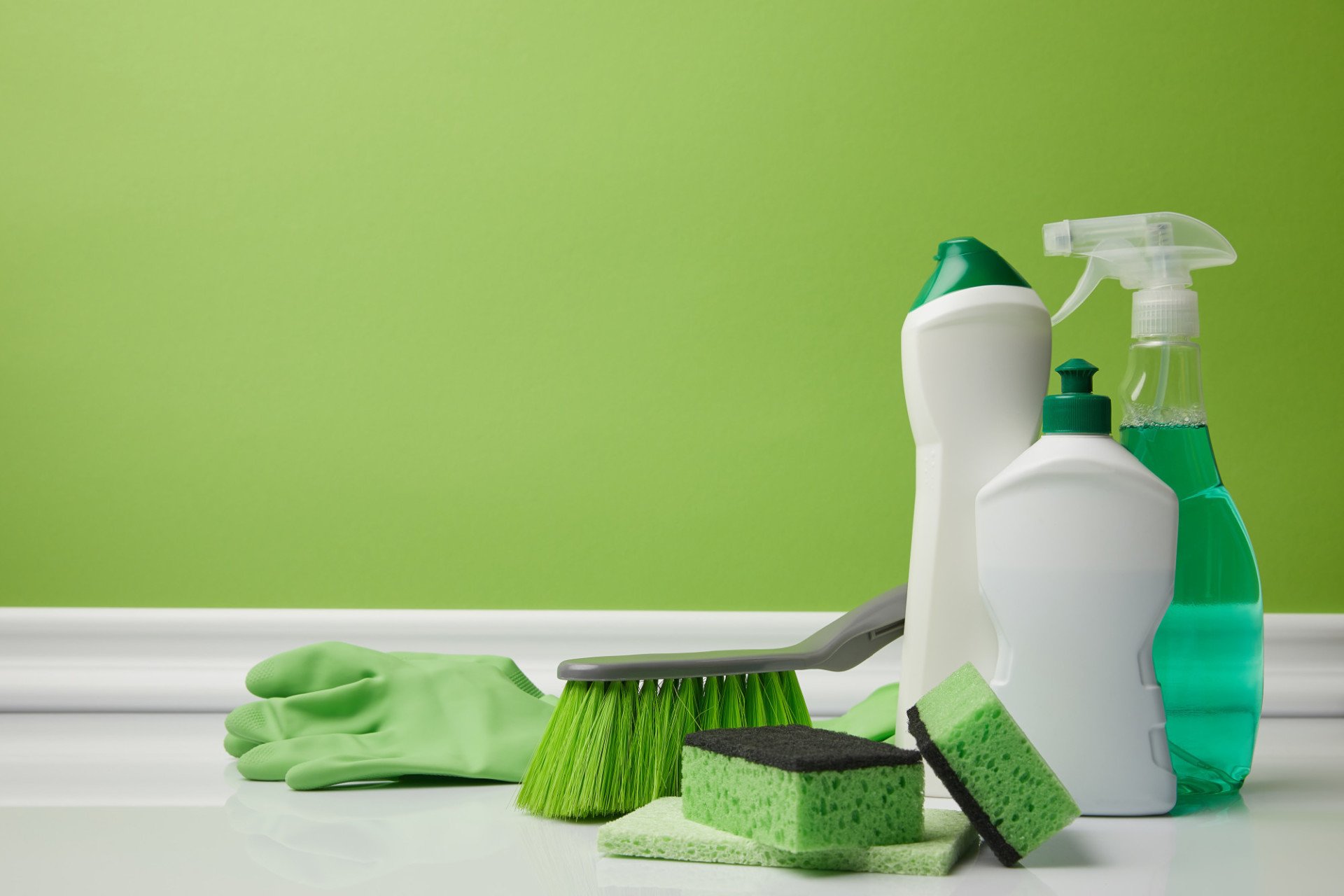
How to Maintain Your House Clean Daily with Minimal Effort
In today’s fast-paced world, maintaining a clean home can often feel like a daunting task. Between work, family commitments, and personal interests, finding time to keep our living spaces spotless can seem nearly impossible. However, what if we told you that achieving a clean, organized home doesn’t have to require hours of strenuous effort? By adopting a few key strategies, you can significantly reduce the time and energy needed to keep your house clean daily. This guide aims to demystify the process, offering practical tips and tricks to streamline your cleaning routine and transform your home maintenance into a manageable, even enjoyable, part of your day.
Understanding the Basics of Daily Cleaning
Before delving into the specifics of strategies for maintaining a clean household, it’s crucial to lay a solid foundation by understanding the core principles of effective daily cleaning. The objective here isn’t about striving for absolute perfection but rather fostering a consistent routine of maintenance that actively prevents the accumulation of dirt and clutter. This approach ensures that your home stays neat and orderly with minimal effort over time. Let’s explore these foundational principles in greater detail:

Frequency Is Key: One of the most critical factors in maintaining a clean home is consistency. Small, frequent efforts are exponentially more effective than infrequent, extensive cleaning sessions. Think of it as watering a plant; occasional heavy watering might seem sufficient, but regular, lighter watering keeps the plant healthy and thriving. Similarly, touching base with your cleaning tasks every day—quickly dusting surfaces, sweeping floors, or tidying up common areas—prevents messes from becoming overwhelming. It’s about making cleaning a part of your daily routine, akin to brushing your teeth or taking a shower, so that it becomes second nature.
High-Touch Surfaces Demand Attention: Certain areas of your home see more traffic and touchpoints than others, making them hotspots for germs and bacteria. Door handles, light switches, faucets, and remote controls fall into this category. Keeping these surfaces clean is not just about aesthetics but also about health and convenience. Imagine walking into a room where everything looks pristine, but the door handle is grimy—you would likely hesitate to touch it, let alone open the door. Regularly sanitizing these high-touch surfaces ensures they remain safe and inviting, contributing to a cleaner, healthier living environment.
Clutter Control Through Designation: Another fundamental principle involves managing clutter effectively. Clutter, whether visible or hidden, can quickly turn a clean space into a disorganized one. To combat this, designate specific areas within your home for temporary storage or drop-off zones. For example, placing a basket near the entrance for shoes, coats, and other items helps contain clutter and prevents it from spilling over into other parts of the house. This strategy not only keeps your home looking tidy but also streamlines the process of putting away items, making it easier to maintain orderliness.
By adhering to these foundational principles—focusing on frequency, prioritizing high-touch surfaces, and designating areas for clutter—you lay a strong groundwork for effective daily cleaning. These practices form the backbone of a sustainable cleaning routine, allowing you to enjoy a clean, comfortable home with minimal effort.
The Power of Routine
One of the most effective yet underestimated tools in your cleaning arsenal is a meticulously planned routine. By setting aside specific times for your daily cleaning chores, you guarantee that every task gets addressed, preventing any area from being overlooked. This structured approach keeps your home consistently tidy with less strain over time. Tailoring a checklist to fit your home’s unique layout and requirements is key. Once established, adhering to this routine becomes a habit, significantly lowering the cognitive burden associated with cleaning. As this routine becomes ingrained, the entire process feels almost automatic, transforming what could be a daunting chore into a seamless part of your day.
Streamlining Your Cleaning Tools
Equipping yourself with the right tools is crucial for streamlining your cleaning efforts, making the process quicker and more efficient. While investing in top-tier cleaning supplies can indeed enhance your cleaning experience, prioritizing versatile and environmentally friendly options offers dual benefits: cost savings and reduced environmental footprint. Here are some indispensable items to include in your cleaning toolkit:
Microfiber Cloths: These cloths are unparalleled for dusting and general surface cleaning. Their microfibers capture dirt and allergens efficiently, leaving surfaces spotless without the need for harsh chemicals.
Natural Cleaning Sprays: Formulated with simple ingredients like vinegar, baking soda, and water, these sprays are effective for a wide range of surfaces. Not only are they gentle on the environment, but they also eliminate the need for chemical-based cleaners, promoting healthier indoor air quality.
By selecting these eco-friendly and cost-effective cleaning tools, you’ll not only optimize your cleaning routine but also contribute positively to the environment.

Leveraging Technology
The advent of technology has ushered in a new era of convenience and efficiency across various facets of our lives, and cleaning is no exception. As we navigate the digital age, the tools and methods available for keeping our homes clean have evolved dramatically, offering solutions that not only simplify the process but also enhance our quality of life. This evolution is particularly evident in the realm of smart home devices and applications designed specifically for domestic chores, transforming the traditional concept of cleaning into a more automated and effortless endeavor.
At the forefront of this technological advancement are smart home devices that extend beyond basic functionalities such as controlling lights and adjusting temperatures. These devices now offer features tailored to cleaning and maintenance, enabling homeowners to manage their living environments with unprecedented ease. For instance, smart thermostats can automatically adjust indoor temperatures based on occupancy patterns, reducing energy consumption and potentially extending the lifespan of heating and cooling systems. Similarly, smart lighting systems can be programmed to mimic natural daylight cycles, enhancing comfort and productivity while saving electricity.
Moreover, the proliferation of mobile applications has introduced a new dimension to home management, including cleaning routines. Apps designed for decluttering and organization can send reminders to tackle specific tasks, turning what could be a daunting chore into a series of manageable steps. These digital aids serve as virtual assistants, guiding users through the process of decluttering and organizing their spaces, thereby promoting a cleaner and more serene living environment.
The introduction of smart appliances has been a game-changer in the cleaning industry. Smart vacuum cleaners, equipped with advanced sensors and mapping technologies, can navigate rooms autonomously, adapting their paths to avoid obstacles and efficiently covering every inch of flooring. These devices learn from their surroundings, improving their performance over time, and can even be controlled remotely via smartphone apps, allowing users to start, stop, or schedule cleaning sessions at their convenience.
Robot mops follow a similar trajectory, using sophisticated algorithms to mop floors without human intervention. They can be programmed to operate at specific times, ensuring floors are kept clean without disrupting daily activities. Automated laundry systems, another marvel of modern technology, can sort, wash, dry, and fold clothes, eliminating the need for manual intervention and freeing up valuable time for other pursuits.
As technology continues to advance, the line between smart home devices and cleaning appliances is blurring, with many products combining both functionalities. For example, robotic vacuums and mops can be integrated into a broader ecosystem of smart home devices, allowing for seamless control and automation of various aspects of home maintenance.
Embracing Mindfulness
Finally, it’s essential to understand that cleanliness transcends the mere physical state of our environments; it also encompasses our mental and emotional states. Adopting a mindful approach to cleaning can elevate the experience from a mundane chore to a meditative practice. This shift involves fully engaging with the task at hand, utilizing all your senses to immerse yourself in the present moment. Before beginning, take a moment to set your intention, grounding yourself with a few deep breaths to foster a calm and focused mindset. Engage your senses as you clean, noticing the textures of surfaces, the scents of cleaning products, and the sounds of your actions.
Expressing gratitude for your home and the comfort it provides during the cleaning process can deepen your connection to your living space and make the task feel more meaningful. Additionally, decluttering and letting go of unnecessary items can simplify your life, fostering a sense of freedom and inner peace. Paying attention to your body’s movements as you clean can also serve as a form of gentle exercise, promoting physical well-being alongside mental clarity.
Reflecting on your cleaning experience afterward can highlight the transformation from a state of chaos to order, offering a sense of accomplishment and peace. Mindful cleaning is not just about achieving a clean home; it’s about nurturing your mental and emotional well-being through the process. By embracing this mindful approach, you may discover that cleaning becomes a cherished part of your self-care routine, transforming what was once seen as a chore into a source of inner peace and self-awareness.
READ ALSO: https://wigancleaners.uk/2024/05/23/tackle-laundry-daily-before-it-piles-up/
Table of Contents
Conclusion
Maintaining a clean house with minimal effort requires a blend of strategic planning, efficient tool usage, technological integration, and a mindful approach. By embracing these principles, you can transform your daily cleaning routine into a manageable, even enjoyable, part of your life. Remember, the goal is not perfection but sustainability—a clean, comfortable home that reflects your lifestyle and values. With these tips, you’re well on your way to mastering minimal effort house cleaning, freeing up more time for the things that truly matter.


